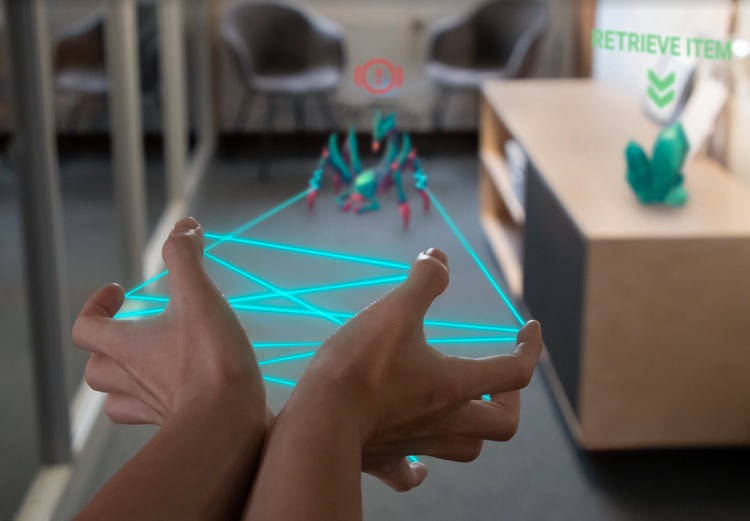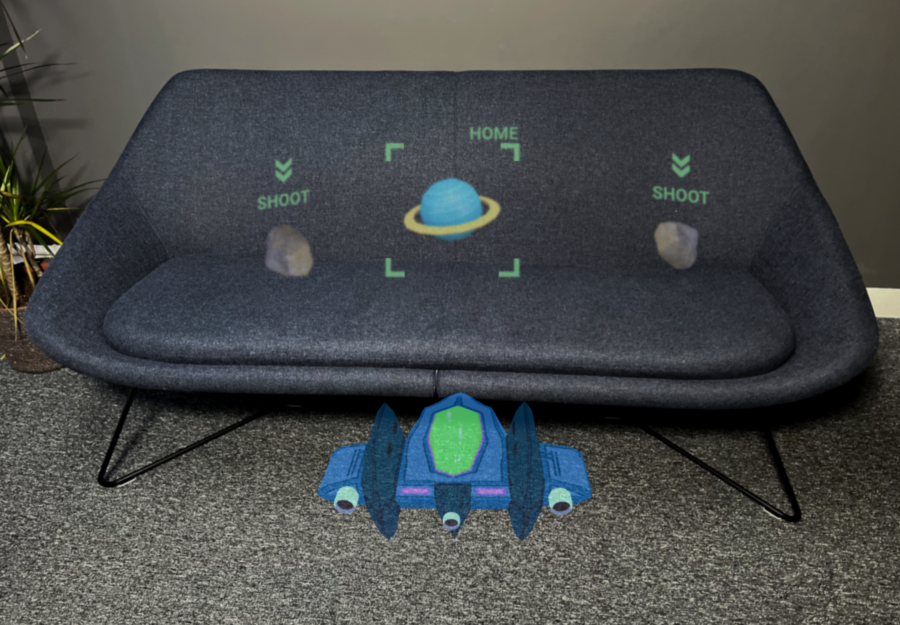
In Augmented Reality News
January 17, 2023 – VividQ, a provider of holographic display technology for augmented reality (AR) gaming, and Dispelix, a designer and manufacturer of waveguides, have today announced that they have designed and manufactured a ‘waveguide combiner’ that the companies state can accurately display simultaneous variable-depth 3D content within a user’s environment.
The two companies have also announced the formation of a commercial partnership to develop the new 3D waveguide technology towards mass production readiness.
According to VividQ, the newly announced waveguide and accompanying software are optimized for 3D applications like gaming, meaning users will be able to enjoy immersive AR gaming experiences where digital content can be placed in their physical world and they can interact with it naturally and comfortably.
The company noted that many existing AR experiences produce 2D stereoscopic images at fixed focal distances, or one focal distance at a time. This can lead to eye fatigue and nausea for users and doesn’t offer the necessary immersive three-dimensional experiences – for example, objects cannot be interacted with naturally at arm’s length, and they are not placed exactly within the real world.
VividQ stated: “In order to deliver the types of immersive experiences necessary for AR to reach mass-market adoption, consumers need a sufficient field of view and the ability to focus on 3D images at the full range of natural distances – anywhere from 10cm to optical infinity, simultaneously – in the same way they do naturally with physical objects. A waveguide combiner is the industry’s favored method of displaying AR images in a compact form factor.”

Commenting on the announcement, VividQ CEO, Darran Milne said: “A fundamental issue [with AR experiences] has always been the complexity of displaying 3D images placed in the real world with a decent field of view and with an eyebox that is large enough to accommodate a wide range of IPDs (interpupillary distance, or the space between the user’s pupils), all encased within a lightweight lens. We’ve solved that problem, designed something that can be manufactured, tested and proven it, and established the manufacturing partnership necessary to mass produce them. It is a breakthrough because without 3D holography, you can’t deliver AR.”
Milne continued, “To put it simply, while others have been developing a 2D screen to wear on your face, we’ve developed the window through which you’ll experience real and digital worlds in one place.”
VividQ’s patent-pending 3D waveguide combiner is designed to work in harmony with the company’s software, both of which can be licensed by wearable manufacturers in order to build out a wearable product roadmap.
VividQ’s holographic display software works with standard games engines like Unity and Unreal Engine, making it easy for games developers to create new experiences, according to the company. The 3D waveguide can be manufactured and supplied at scale through VividQ’s manufacturing partner.
For more information on VividQ and its holographic display technology, please visit the company’s website.
Image credit: VividQ
About the author
Sam is the Founder and Managing Editor of Auganix. With a background in research and report writing, he has been covering XR industry news for the past seven years.




